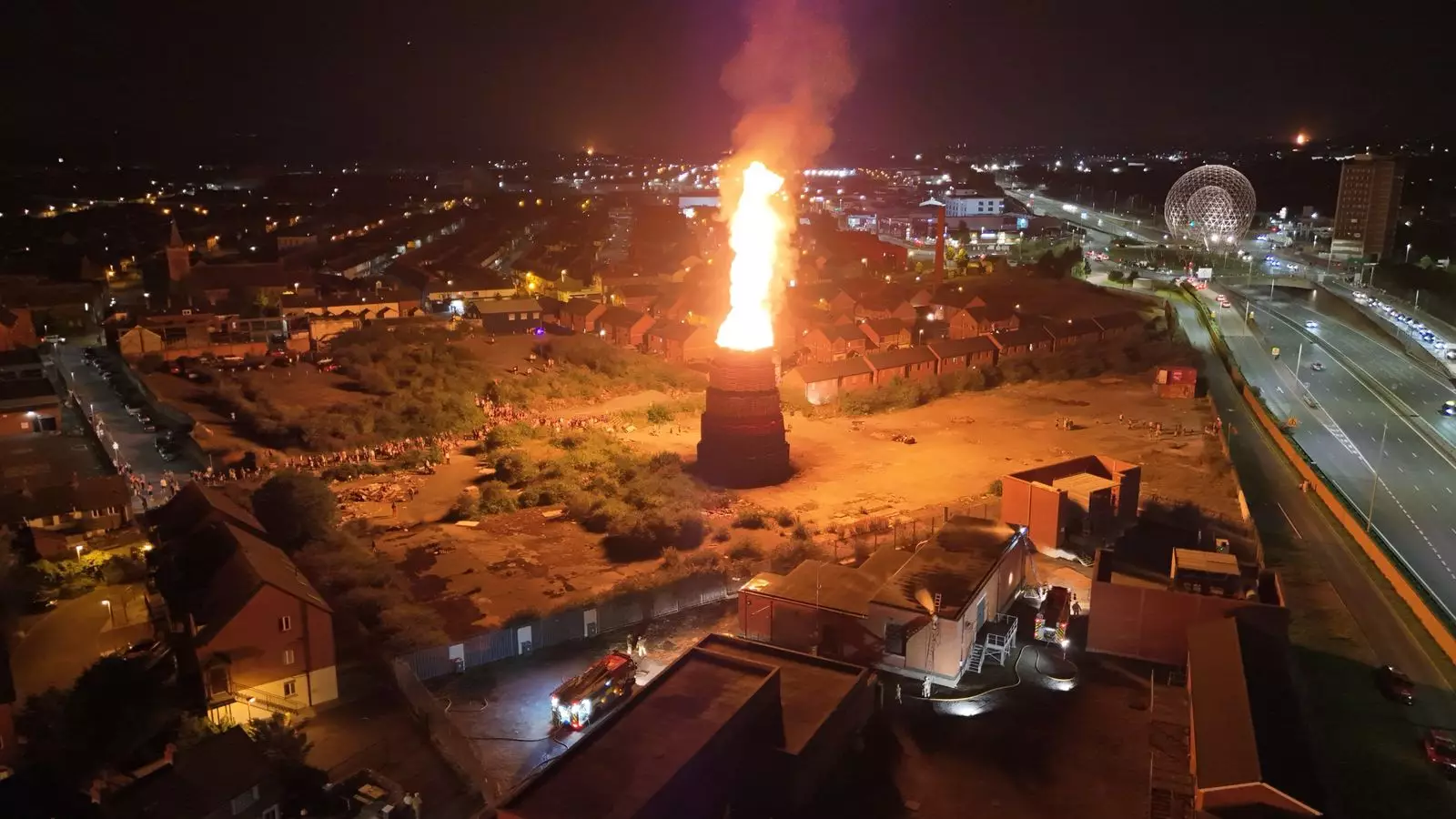Northern Ireland’s annual bonfire spectacle, particularly notable during the Eleventh Night preceding the 12 July celebrations, serves as a potent symbol of the region’s enduring cultural and political fissures. While these fires are often portrayed as mere traditional festivities, a closer examination reveals a complex web of historical grievances, identity assertions, and societal tensions. The fact that hundreds of these fires are lit across Northern Ireland speaks to their deeply rooted significance, yet the chaotic scenes they often generate demand a more critical perspective. Rather than simply celebrating a cultural ritual, these bonfires exemplify a community’s attempt to assert identity amidst a backdrop of political discord and historical trauma.
The recent events underscore how these seemingly innocuous customs can ignite controversy and danger, especially when safety and environmental concerns are disregarded. The incident of a bonfire being lit at a site containing asbestos near vital infrastructure, including hospitals and power stations, is particularly alarming. This reckless act not only jeopardizes public health but also symbolizes a disregard for communal well-being in pursuit of ideological displays. The political debates and legal challenges surrounding this specific bonfire reflect the fragile balance in a society still grappling with its historical divisions. When tradition clashes with public safety and environmental responsibility, the result is chaos that undermines community cohesion rather than reinforcing it.
The Dangerous Edge of Cultural Pride and Provocation
While most bonfires are celebrated peacefully, the recent escalation reveals how symbolic displays can escalate into provocative acts. The inclusion of effigies targeting political opponents and controversial imagery, like the portrayal of migrant boats or inflammatory slogans, intensifies tensions and inflames community divisions. These acts are not just symbolic gestures; they serve as flashpoints that threaten to rekindle long-standing hostilities. Engaging in such provocative displays under the guise of cultural pride is ultimately a symptom of a society unable to move beyond its historical grievances.
Critically, these incidents also expose a failure of leadership—both political and societal—to bridge divides. Instead of fostering dialogue or promoting mutual understanding, authorities often seem overwhelmed or indifferent, choosing reactive measures over proactive reconciliation. The burning of effigies or provocative posters not only deepens mistrust but also expresses a broader societal frustration with unresolved conflicts. The community’s embrace of extremes reveals an underlying fatigue with dialogue and negotiation, highlighting how deeply rooted tensions have become normalized under the guise of tradition.
The Costs of Ignoring Safety and Environmental Risks
The community’s readiness to ignore safety protocols and environmental concerns during these celebrations is deeply troubling. The asbestos bonfire, despite warnings from officials, exemplifies a reckless disregard for public health. Such acts not only threaten immediate safety but undermine collective efforts to build a sustainable and inclusive society. The environmental crime investigation initiated by authorities is a necessary step, though it shouldn’t be viewed merely as legal opportunism but as a recognition of the broader irresponsibility associated with these events.
The operational response by fire services, overwhelmed by a surge of incidents, underscores how these celebrations often spiral into chaos. With emergency calls increasing exponentially during the peak hours, it’s clear that these are not harmless traditions but sources of real danger. The risks extend beyond fire; the potential for injury, environmental contamination, and community destabilization makes a mockery of claims that these customs are simple cultural expressions. Failing to address these risks just perpetuates cycles of harm and division, effectively turning what could be a unifying cultural event into a source of discord.
Reimagining a Future Beyond Divisive Rituals
Looking ahead, it’s imperative that Northern Ireland reevaluates its relationship with these incendiary displays. Public safety, environmental sustainability, and community cohesion must take precedence over political bravado. While tradition and cultural pride are important, they should not come at the expense of public health or social stability. The ongoing protests, legal battles, and incidents serve as stark reminders that continuing down this path risks further entrenching divisions.
The question really lies in whether the community and its leaders will reconcile their differences and reimagine these celebrations as symbols of unity rather than division. Moving beyond destructive displays towards inclusive dialogues could foster a more resilient society—one where cultural pride does not threaten safety or communal harmony. In the end, the true challenge is to balance historical respect with modern responsibilities, transforming symbolic acts into opportunities for genuine reconciliation instead of destructive spectacle.


Leave a Reply